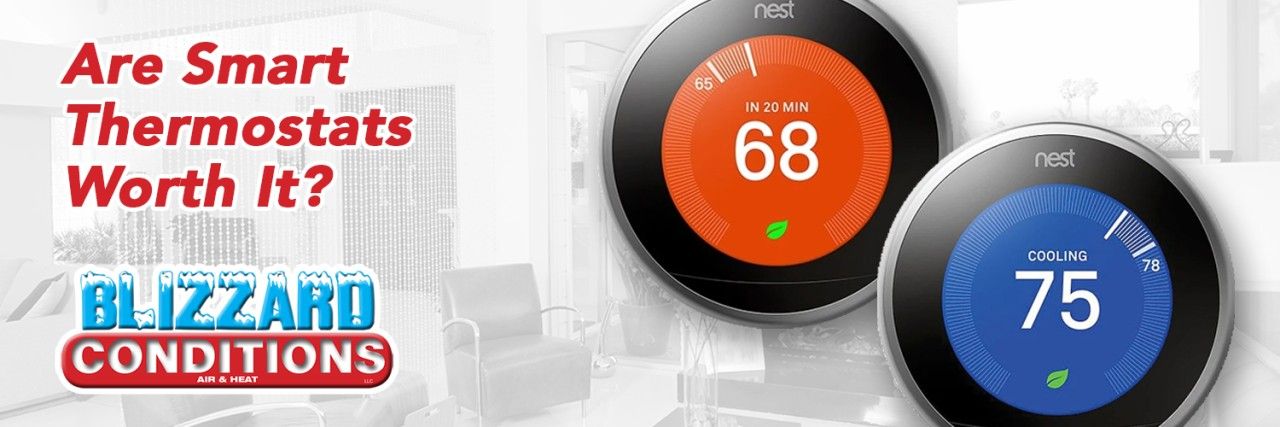Wondering whether a “Smart” Thermostat is right for you?
Let’s begin by defining our terms… There are 3 basic types of thermostats: Manual Thermostats, Programmable Thermostats, and Smart Thermostats.
Manual Thermostats, the kind you might find in a hotel room or a very old home, allow you to manually set the temperature – that is all. They’re inexpensive, but they’re not especially precise or energy efficient. Programable Thermostats, a giant improvement over Manual Thermostats, automatically adjust the temperature based on a pre-set schedule – if you take advantage of that feature.
So what makes a thermostat “smart” and are they worth the added upfront cost?
Whether it’s a thermostat, washing machine, TV or blender, the “smart” prefix simply means that the device is Wi-Fi enabled so it can connect to an app on your smartphone or tablet.
The most basic Smart Thermostats just allow you to adjust the temperature remotely. This means that you can set the thermostat to your desired temperature before leaving work for the day or on your way home from the airport after a vacation or business trip, while maintaining an energy-saving temperature while you’re away from home. Conversely, if you realize on day 3 of your vacation that you didn’t turn up the thermostat before leaving, you can correct that mistake from anywhere in the world.
Middle-of-the-road models use motion sensors to “learn” your preferences and routine, and automatically adjust to an energy-saving temperature when you’re asleep or away. Higher-end models add features like geofencing to achieve your desired temperature by the time you get home.
According to the EPA, Smart Thermostats save users an average of 8% on their electric bills. In contrast, setting your run-of-the-mill Programable Thermostat 7 to 10° higher for 8 hours a day saves you about 10% on average. Unfortunately, 40 to 70% of users don’t program their Programable Thermostats, so they don’t realize the same real-world energy savings as Smart Thermostat users.
Bottom line, if your family’s schedule is extremely predictable and you’ve programmed your thermostat to maintain an energy-saving temperature while the house is empty, or you’re really good about turning the thermostat up 7 to 10° whenever you leave, or you’re home all day, so it’s not practical to turn up the thermostat for several hours a day, you can probably get away without a Smart Thermostat.
If that’s not you, a Smart Thermostat can easily pay for itself by reducing your electric bills.
Additional features that might make a Smart Thermostat worth it for you include reports on how often your system runs, reminders to change your air filter, and remote temperature sensors that keep the right temperature, in the right room, at the right time. Some models even allow your utility company to adjust your thermostat remotely, in exchange for discounts or incentives.
Before you take the plunge, you should know that some HVAC systems are designed to work better when they run constantly at a fixed temperature, so a Smart Thermostat may work against you, and not all Smart Thermostats work with all HVAC systems so, if you’re in Sarasota or Manatee County, call Blizzard Conditions at 941-961-2846. We’ll help you find the right thermostat for your HVAC system.
When you subscribe to the blog, we will send you an e-mail when there are new updates on the site so you wouldn't miss them.







Comments